I would love to take a mature and nuanced perspective about my first week in Namibia, but to be honest, a lot of the real joys and experiences so far have been rooted in a far more childish sort of delight. When I was a child, you could say the earliest part of my homeschooling methodology were the hours of nature programs I watched every morning on Nat Geo, Animal Planet (before it only featured pets and cops), and Discovery. I remember shows like Big Cat Diaries, Meerkat Manor, and documentaries about the Kalahari, the Okavango, the Maasai Mara, and the Congo. So it was obviously going to be exciting seeing all the animals I imagined as so far away and unreachable there on my couch in my home in Virginia.
Namibia has the second smallest population density of any country on earth, just behind Mongolia. It was a part of South Africa before and during apartheid, only gaining independence in 1990, and proud of the progress she has made since gaining then. As anyone you meet will tell you, Namibia has her own problems with government corruption – so it goes for so many African nations where “Corruption is a hobby” as a local accounting student told me – but from what I learned from a bookkeeper for a uranium mine, even work we in the west would immediately recognize as being exploitative and undesirable, is beginning to furnish locals with enough money to allow them to at least start playing the game. Other than that, geographic and climatic features prevent significant development – as seemingly endless stretches of hamada desert, sand dunes, dry savannah, and rocky outcrops make living off the land in an agrarian sense almost impossible. The lack of arable land and water sources that are the culprits are also culpable for the general lack of growth potential in rural towns. As such, many private investors take patches of ground and turn them into private game reserves, wilderness lodges, mountain or desert retreats, and more; and while the instantly-recognizable difference in capital investment between towns and lodges may seem like so much neo-colonialism, it creates an ecological and economic reality rather similar to the Mojave Desert zone in the U.S. I also got the feeling that Namibians seeking gainful employment at the lodges and resorts were genuinely happy to be there, and happy to be sharing the natural bounty of their country with enthusiastic travelers. They still carried their Namibian manner of speaking and conducting affairs, same as if I had been buying something from a local store.
My first trip out of the nest-like security of Windhoek, was down to a part of the Namib-Naukluft National Park called “Sossosvlei,” a popular destination for tourists due to the paved road and the unique ecological features there. “Sossos” is an indigenous word for a place where water gets trapped, and “vlei” is an Afrikaans translation meaning valley. However while Sossosvlei is an interesting feature of the park, it isn’t the primary reason for the visit. The primary visitation purpose comes down to the fact that you have a 60 kilometer paved road that runs through the oldest desert in the world – the Namib Sand Sea, a World Heritage Site, boasting all 4 criteria for such designation, with one of the most unique desert ecologies in the world.
The road through Sossosvlei past the inspiring dunes of the Namib sand sea.
I have dreamed of going to the Namib Desert for over a decade, but it was a recent podcast from BBC’s The Compass that pushed me to start taking my dream and trying to make it a reality. In the series called “Living with Nature” host Chris Watson takes you into natural landscapes with state-of-the-art sound recording equipment to allow you to hear the landscape in breathtaking ways. In the Namib Desert episode, I was entranced by the sound of the wind, or the solitary call of animals like the sand grouse and the barking gecko.
Well after driving a whole day to reach Sossosvlei, which you can read about in my story on World at Large entitled, “Renting a Car in Namibia – The Things I Wish I had Known”, the first day in the desert swept every concern I had away, as the natural splendor and harshness of the land reached out to me. Entering the park was much the same as you were entering Sequoia National Park in the United States, with one main road going through the park, features and hiking trails arrayed on either side. As I first stepped onto the dunes, I immediately tuned into the thing I love most about the desert – the utter silence and stillness. Even though I was walking over a mountain of sand, the ground was consistently occupied by bushes. One of the reasons why the Namib was granted World Heritage Status was because of the relationship between the sand dunes and the wind. The wind blows sand all day, turning tiny anthills into dunes as high as Appalachian mountain peaks, but it also turns the sand into incredible pieces of art. Here the sand and wind are joined by the sun, as the three work together to create contrasts of colors from the blue sky against the orange sand with black shadows crawling over the ripples in the dunes. It was like walking over an impressionist’s canvas.
No force or entity in reality can blend the micro-scale with the macro-scale and have it more deeply move you than can extraordinary natural places. In a sea of dunes – hundreds of trillions of particles of sand creating such massive rippling structures formed by the force of wind rushing across the landscape, an environment in which humans would die so fast and easily, I found myself in what could be considered nature’s version of the cross walks at Time Square. About my feet, dune beetles in fives and sixes scuttled about on their own separate missions, passing each other like yellow cabs, while the tiny erratic movements of the barking geckos created such beautiful trails in the sand from their tails lagging behind them. Above, the iconic “kil-ki-maine” chirps of the Namaqua sandgrouse resonated in the curves of the dune, such that you were never sure how many birds there were or where they were going. With courteousness, I kept a fair 10-yard distance from the several large oryx – ungulates weighing hundreds of pounds – that I stumbled upon as they fed quietly on the dune grasses; their beautiful white and black painted bodies all the more contrastingly striking in the sun. At the top of the dune, flocks of birds hung about in and on the branches of bushes in the hollows of the sand, while the wind constantly created a low rustling in the ears of a still hiker as it blew sand against the vegetation.
On top of the dune, I could see for tens of miles in all directions, nothing but sand and flatlands in a massive ecosystem ruled by sun, wind, and sand. Yet here was also an ecosystem of uncountable individual comings and goings, from the tiny beetles to the mighty oryx. I’ve only ever before encountered such a density of species and activity in Yellowstone Park, and I was left with a feeling of awe and gratitude to have glimpsed it.
Further down the road, I hiked some other dunes, and saw some strange crane-like birds which I confirmed to be Ruppells bustards – with perfectly circular heads and snow white underwing feathers. Eventually I made it all the way to Sossosvlei and took a cheap shuttle service to a hiking area. Hiking in, one saw that the dunes didn’t only conceal sand, but massive shale-like mineral-rich slabs of white rock studded with thick green bushes. It was an Eden of sorts, only without the water, yet still drawing in many of the aforementioned oryx, Namibia’s national animal, who milled about under the shade trees. Following their tracks back up into the dune sea, I summited a dune and saw nothing but sand all around me – which was exactly the feeling I was looking to feel: utter isolation. I sat down and spent some time viewing the oryx with my binoculars while the wind cooled my sweat from the intense hike. That night I counted my blessings as the curious calls of the barking geckos pushed me into uneasy sleep in the passenger seat of my SUV.
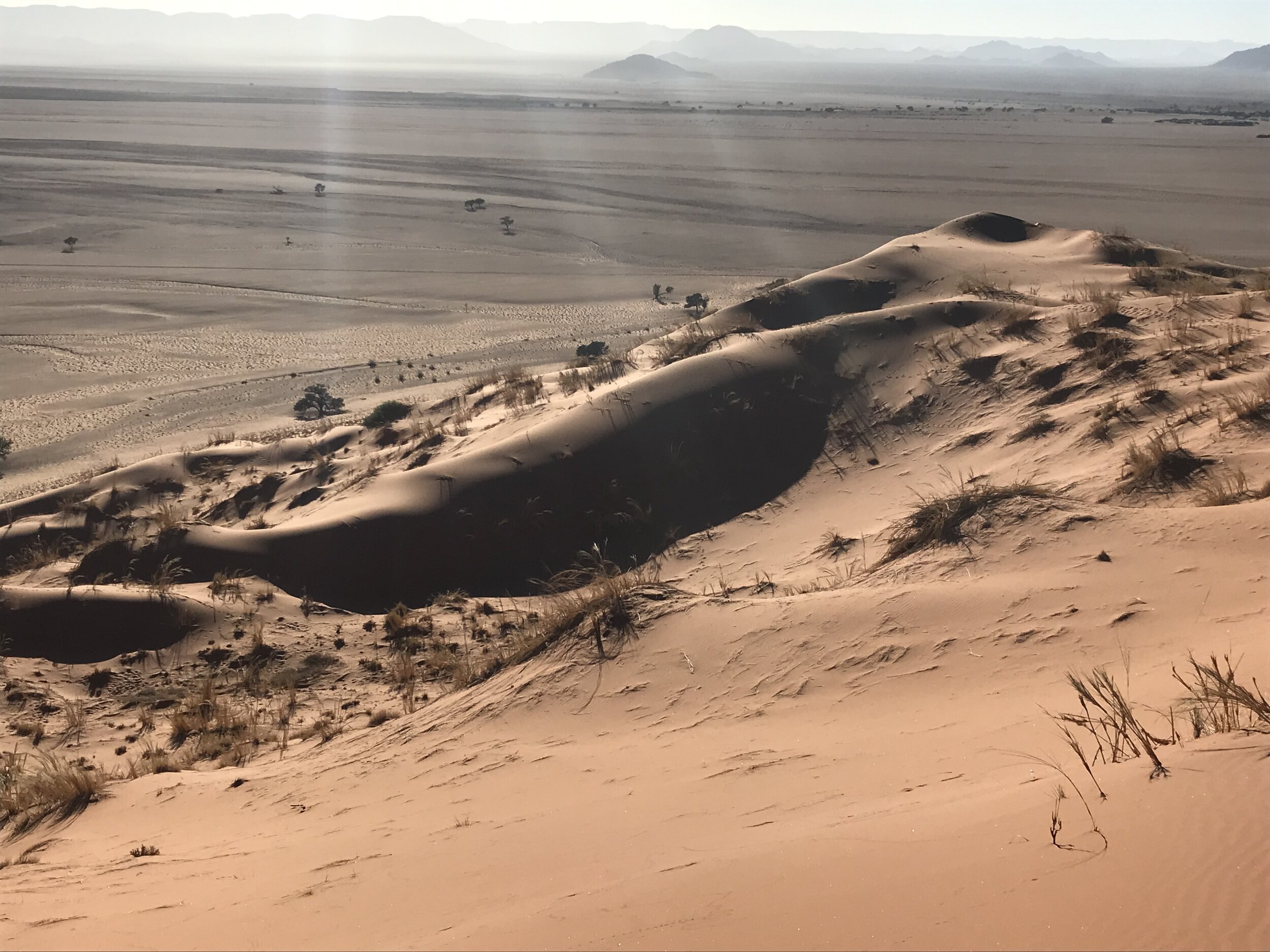
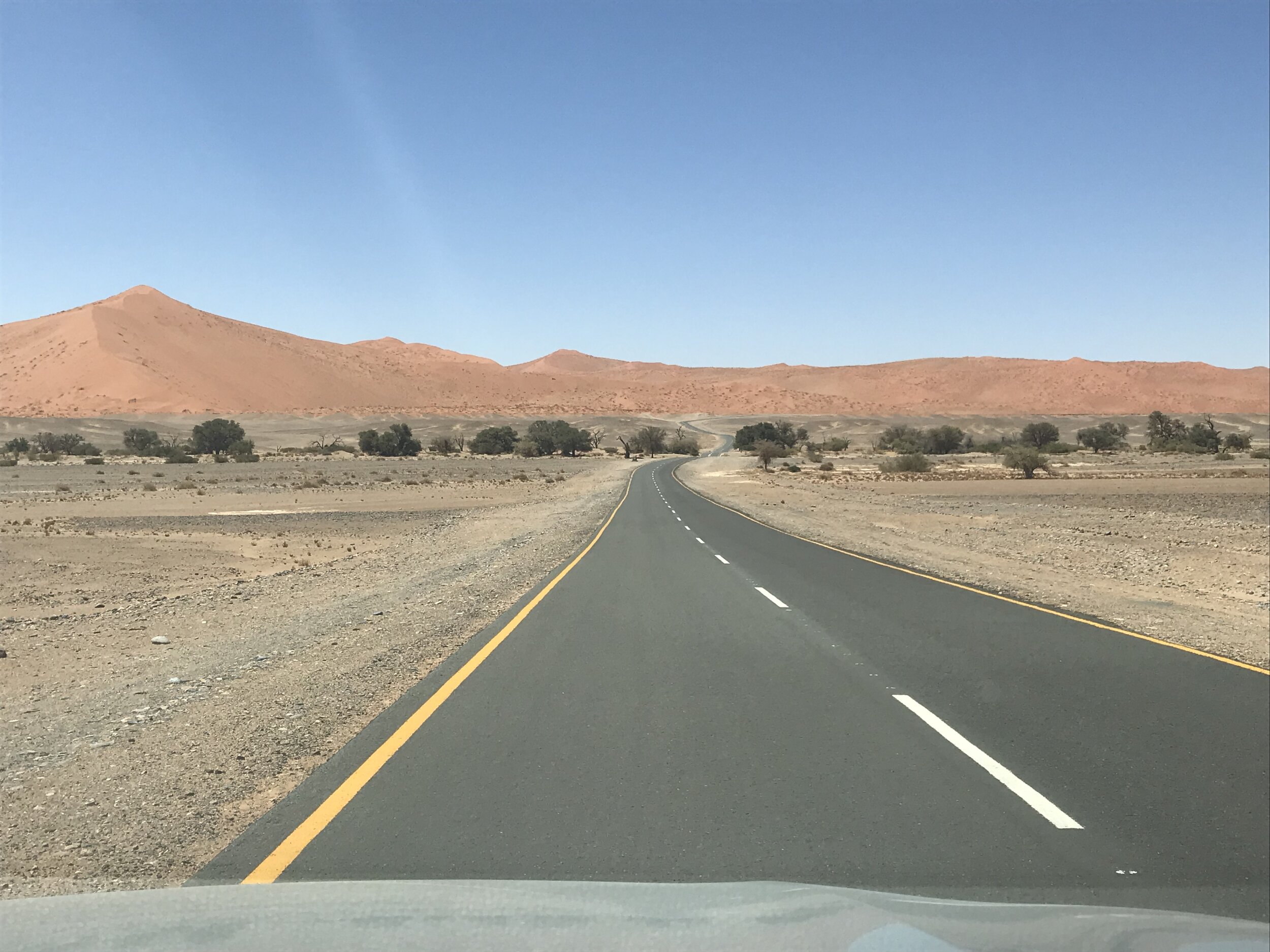
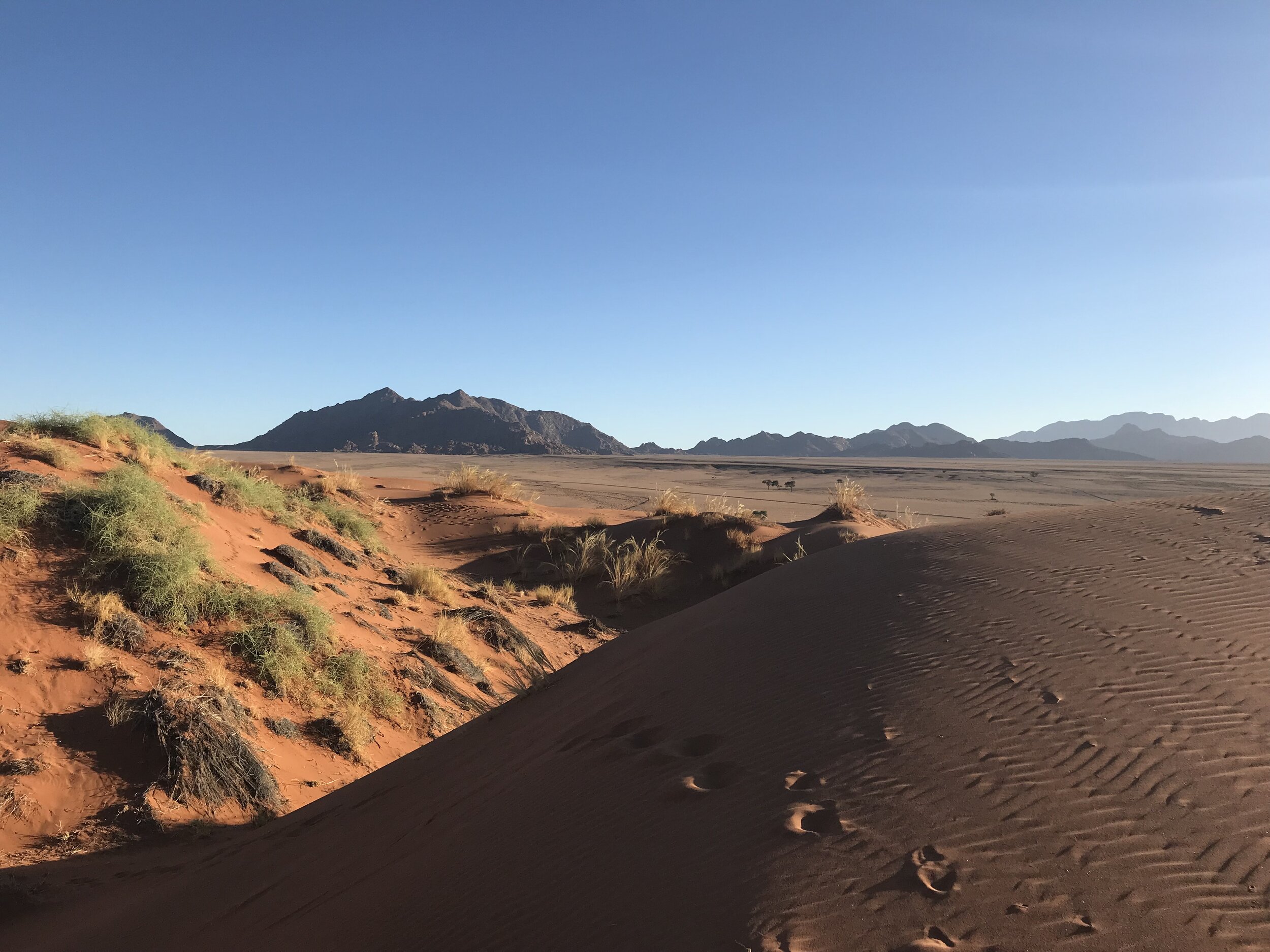
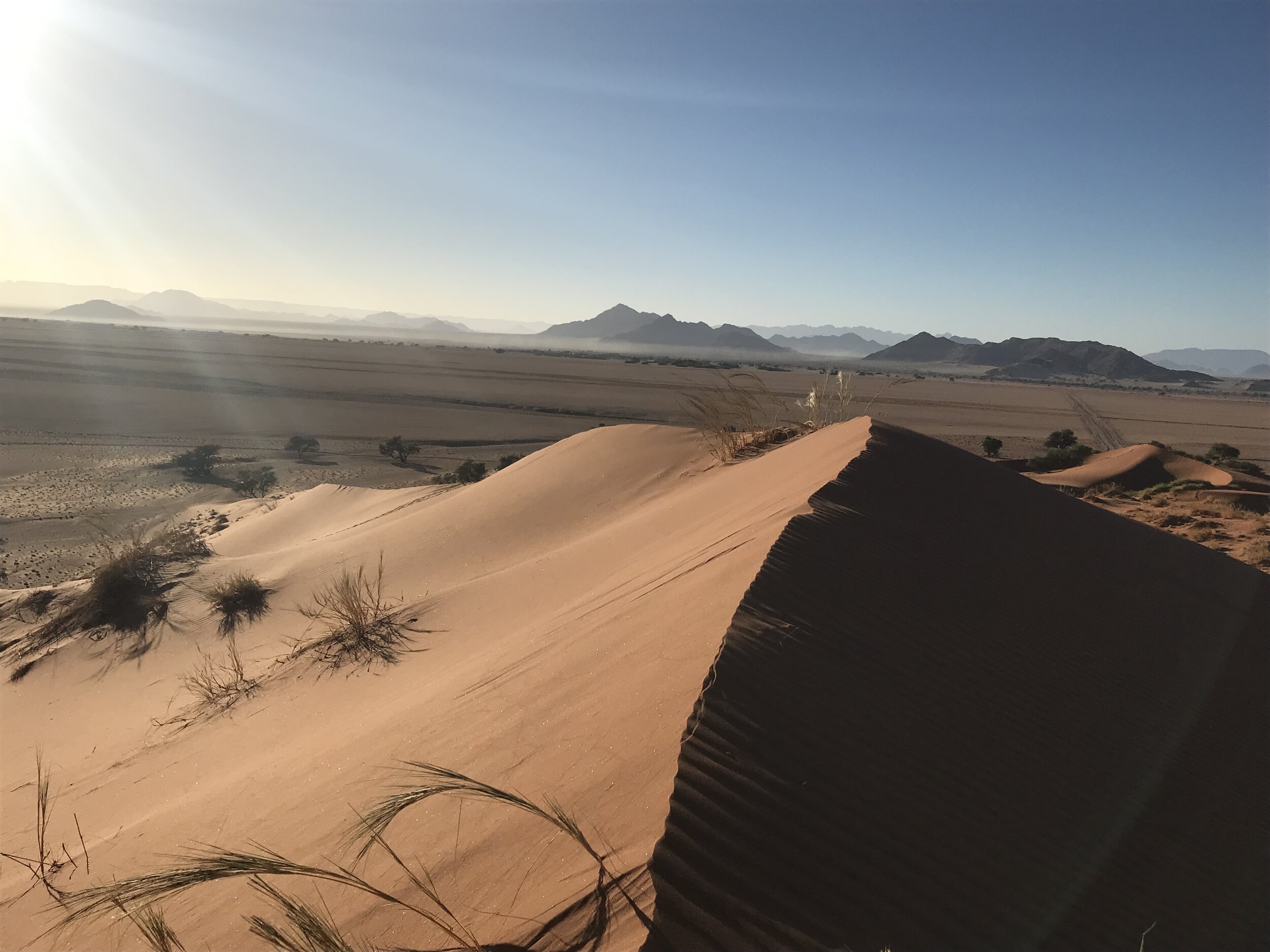

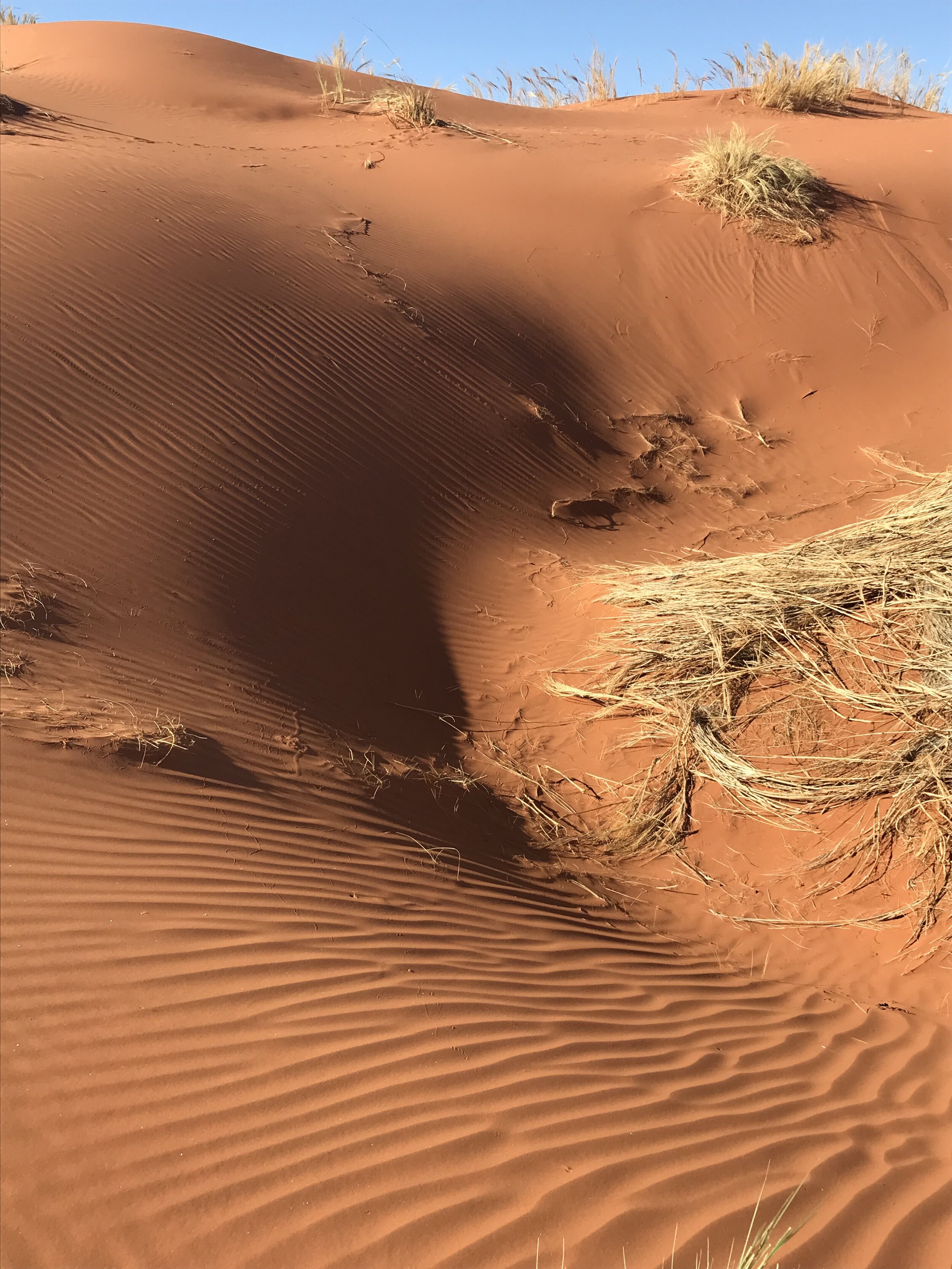

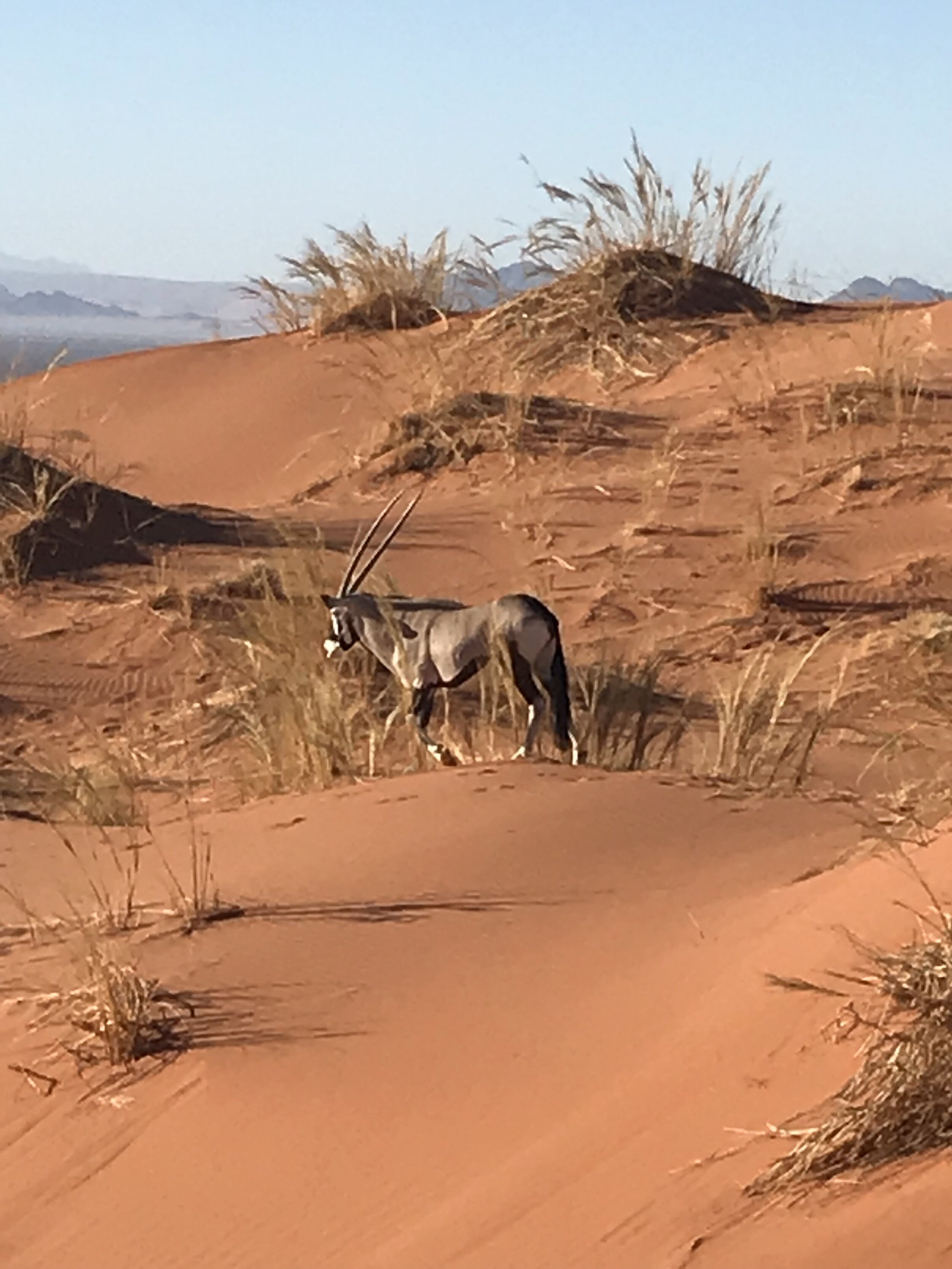
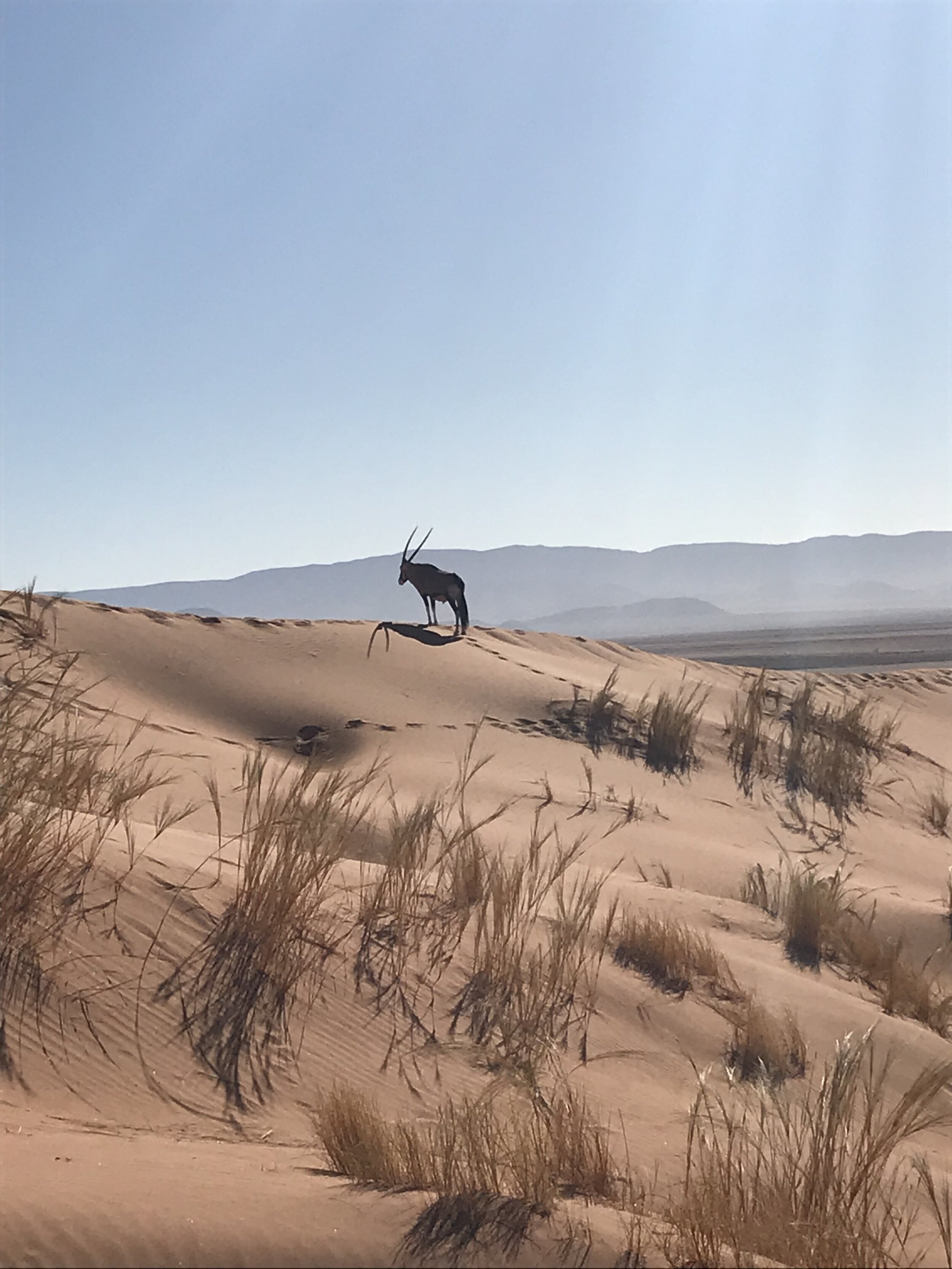
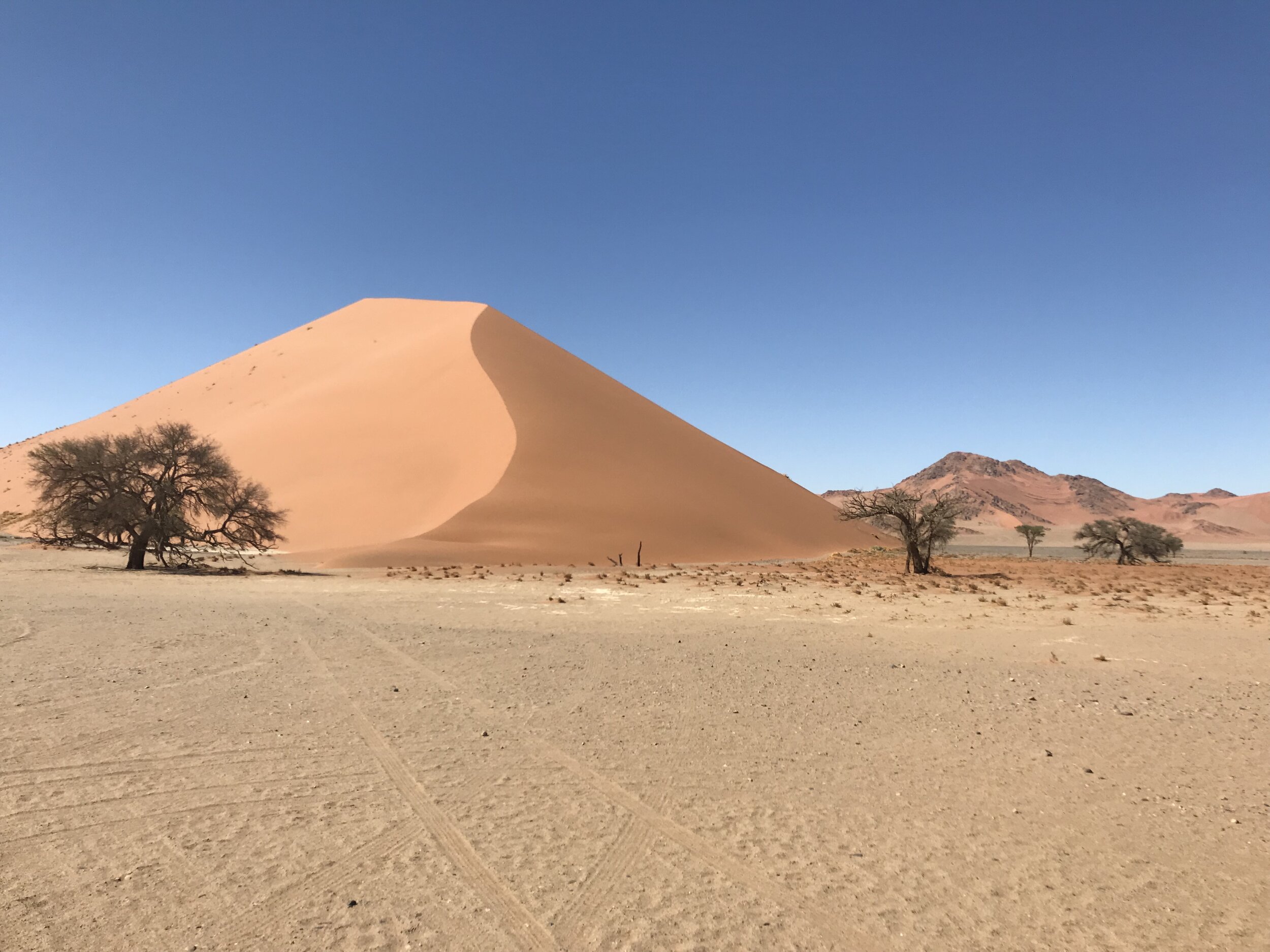
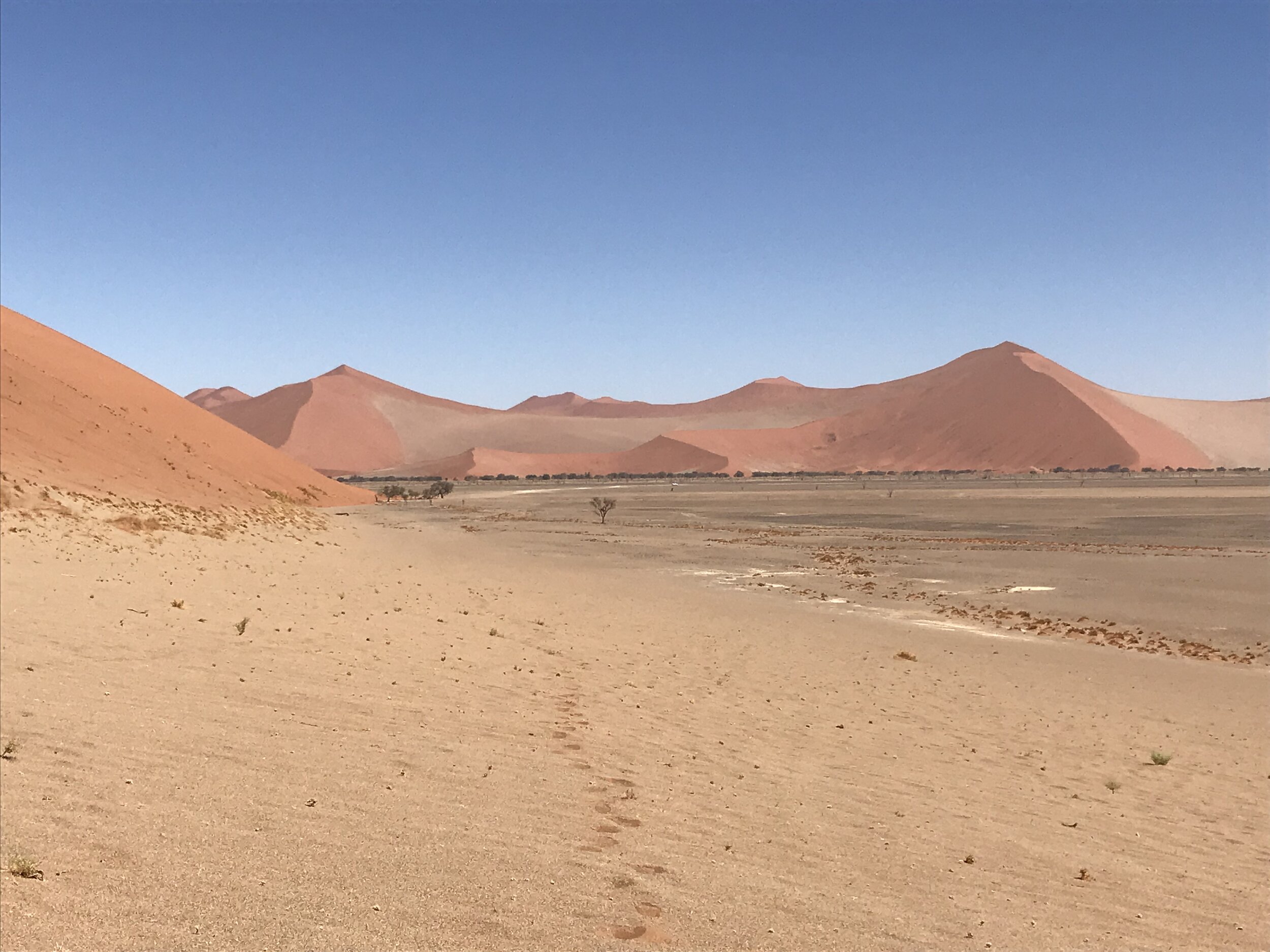
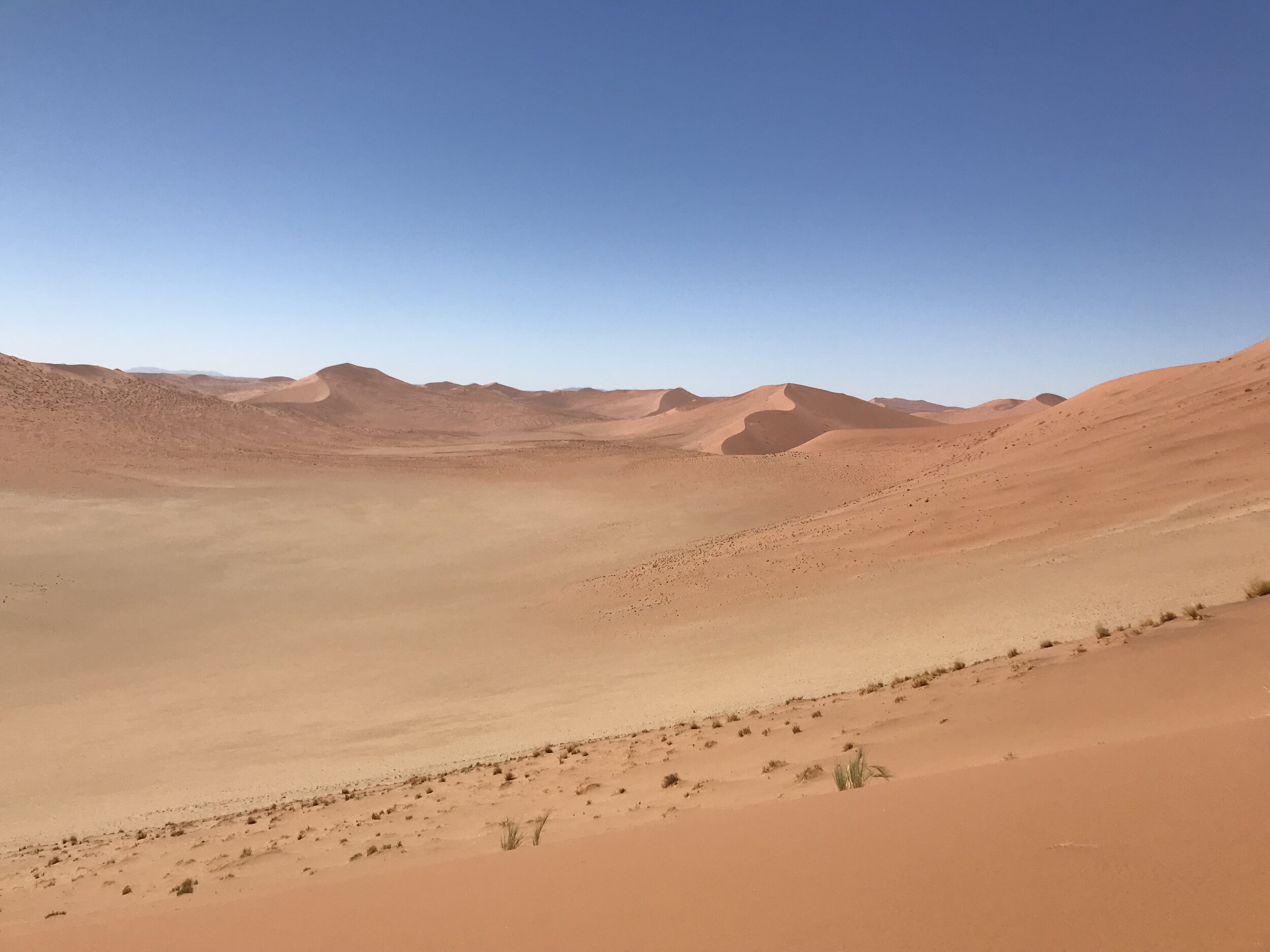
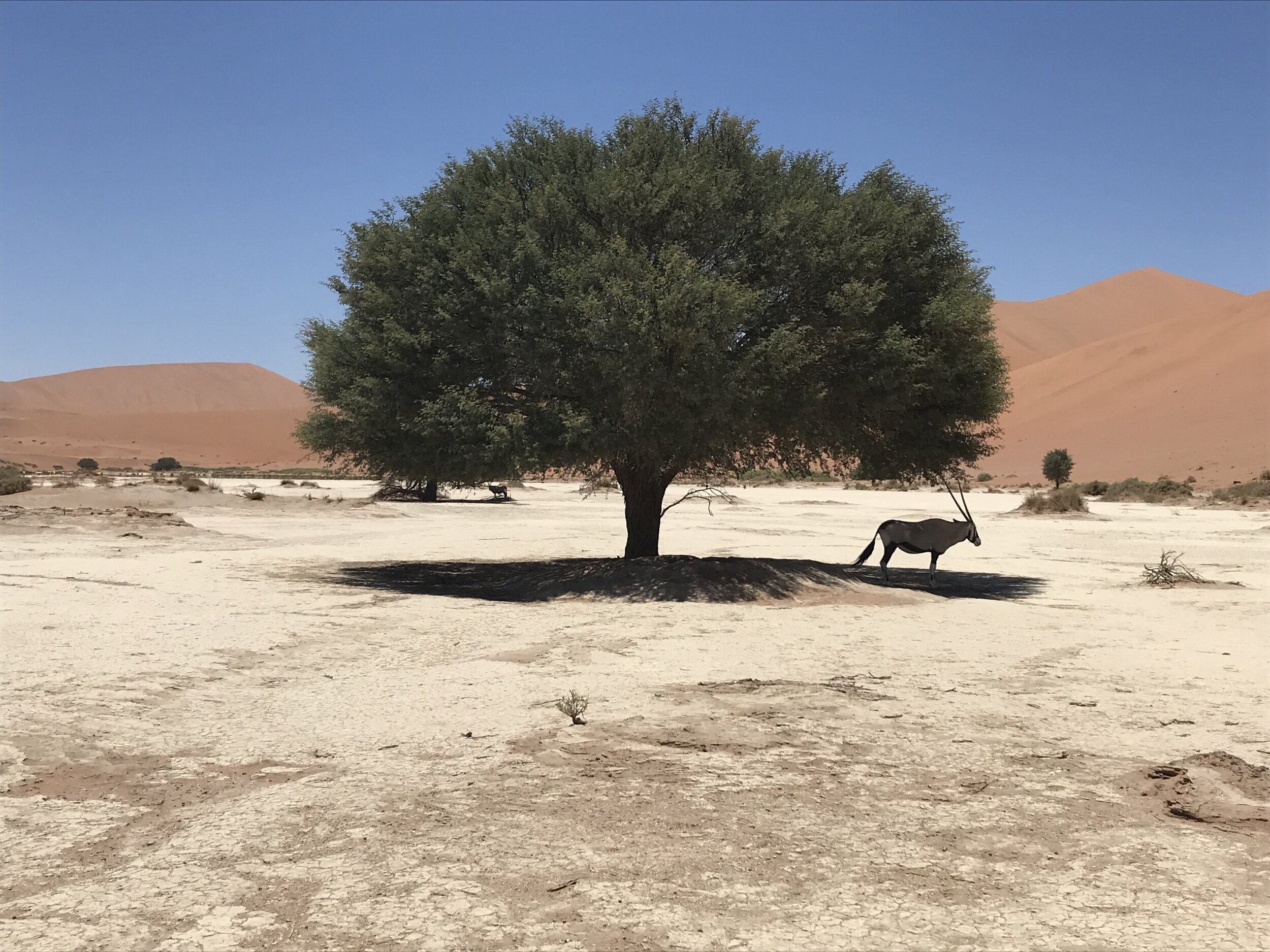
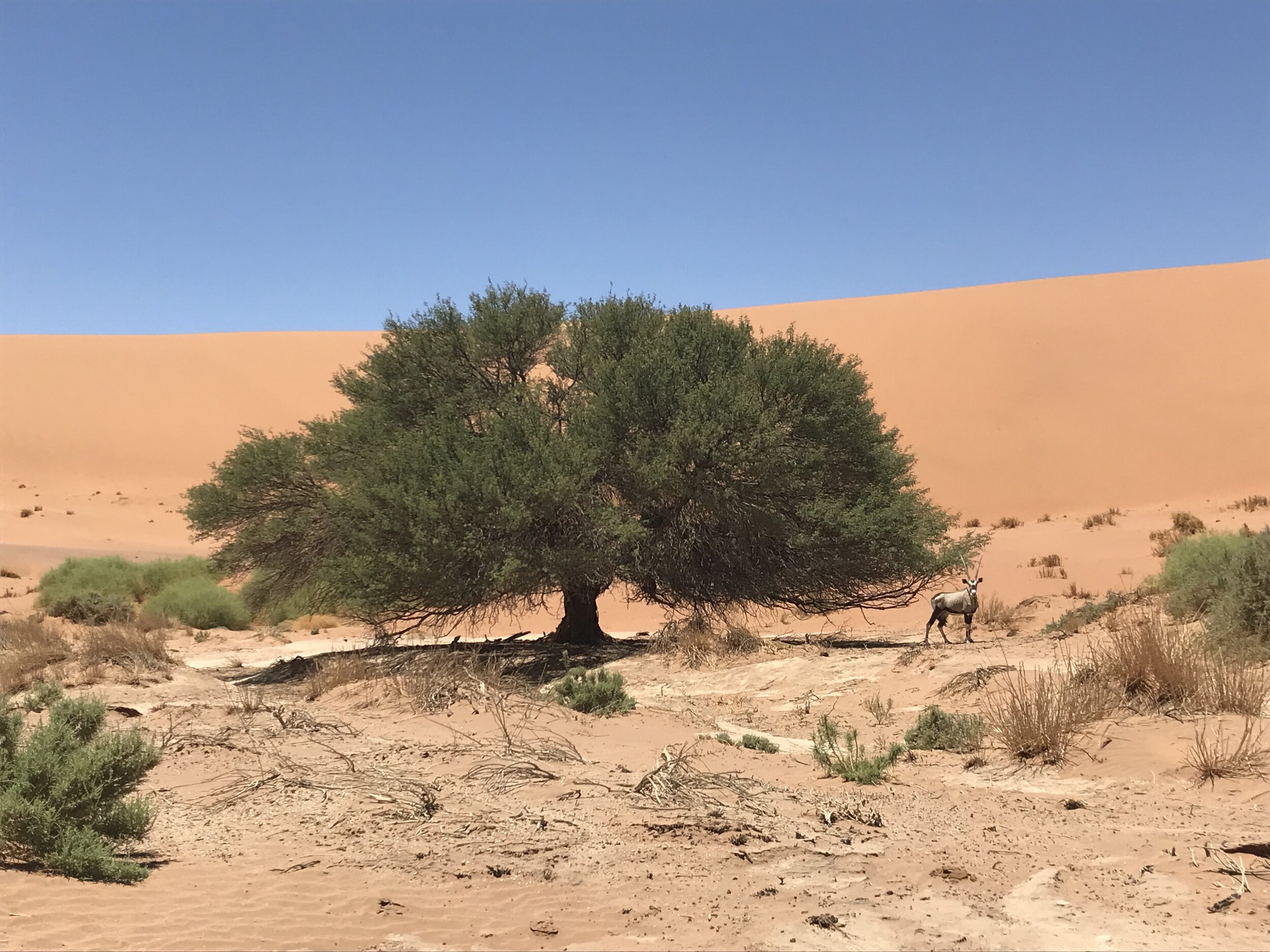

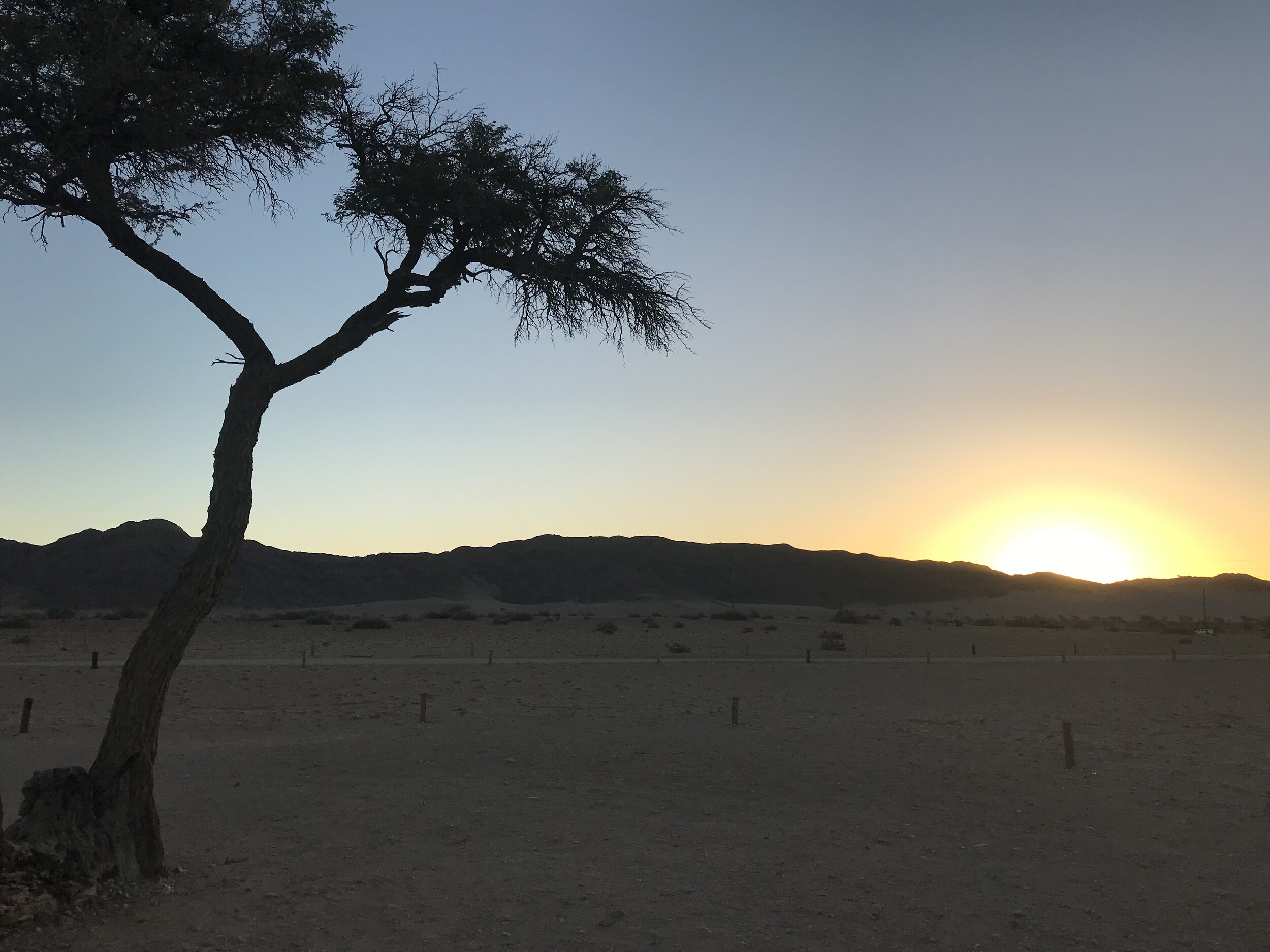



Those are the most amazing photos!
You put there! Now I wanna go…..